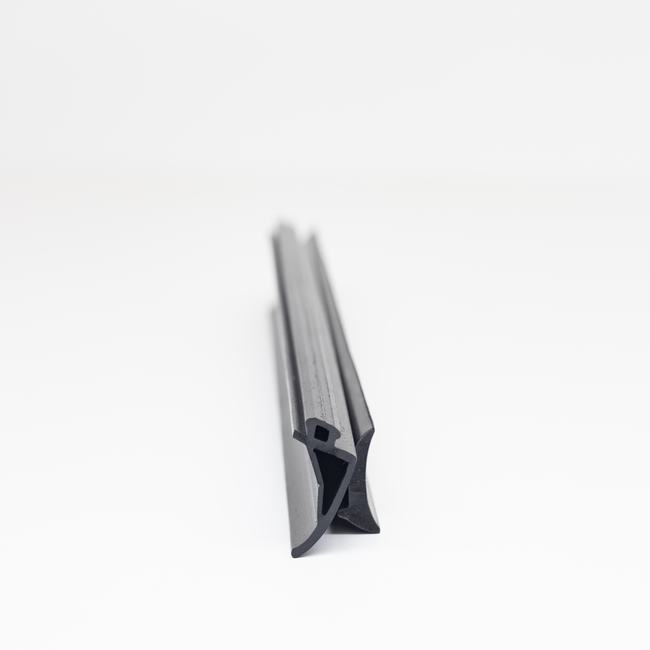Steel door seals, also known as door weatherstripping or door gaskets, are essential components in building construction and architecture. These seals play a vital role in maintaining the energy efficiency, security, and environmental comfort of a structure by creating a barrier against the infiltration of air, water, noise, and dust. In this comprehensive description, we will delve into the various aspects of steel door seals, including their types, functions, materials, installation, maintenance, and the wide range of applications in which they are used.
1. Types of Steel Door Seals:
Steel door seals come in a variety of types to suit different door styles, applications, and environmental conditions. Common types include:
- Astragal Seals: These seals are used on double doors to create a secure seal between the two door leaves. They prevent drafts, dust, and pests from entering through the gap between the doors.
- Threshold Seals: Installed at the base of a door, threshold seals create a barrier against air and water infiltration, making them ideal for exterior doors and entrances.
- Perimeter Seals: These seals are installed around the edges of a door frame to provide a complete seal, reducing air leakage and enhancing energy efficiency.
- Automatic Door Bottoms: These are typically used in commercial settings and automatically drop a seal to create a tight seal when the door is closed.
- Magnetic Seals: Equipped with magnets, these seals create a secure and airtight closure when the door is shut.
- Gasket Seals: Made of rubber or other flexible materials, gasket seals provide insulation and weatherproofing for doors.
2. Functions of Steel Door Seals:
Steel door seals serve several essential functions, including:
- Weatherproofing: They prevent water infiltration, ensuring that rain or moisture does not enter a building, which is vital for the protection of interior spaces and materials.
- Energy Efficiency: Steel door seals reduce air leakage, enhancing the energy efficiency of a building by preventing heat loss in cold weather and cool air escape in warm weather.
- Soundproofing: They help reduce noise transmission between rooms or from external sources, creating a quieter and more comfortable environment.
- Security: Some door seals improve security by sealing gaps, making it harder for intruders to force entry.
- Dust and Pest Prevention: Steel door seals act as barriers to dust, pollen, insects, and pests, maintaining a cleaner and healthier indoor environment.
3. Materials:
Steel door seals can be made from various materials, including:
- Steel: Steel door seals are durable, strong, and resistant to corrosion, making them suitable for heavy-duty applications.
- Rubber: Rubber seals provide flexibility, insulation, and airtight sealing, commonly used in residential and commercial doors.
- Silicone: Silicone seals offer excellent temperature resistance and flexibility, making them suitable for extreme weather conditions.
- Neoprene: Neoprene seals are known for their resistance to moisture, chemicals, and UV exposure, making them ideal for exterior doors.
4. Installation:
Proper installation is crucial to the effectiveness of steel door seals. It involves:
- Cleaning and preparing the door and frame surfaces.
- Measuring and cutting the seal to the required length.
- Securing the seal in place with screws, adhesive, or other fasteners.
- Adjusting the seal to ensure a proper fit and airtight seal when the door is closed.
5. Maintenance:
Regular maintenance is important to ensure the longevity and effectiveness of steel door seals. This includes:
- Inspecting seals for wear, damage, or deformation.
- Cleaning seals to remove dirt and debris.
- Replacing seals that are worn out or damaged.
6. Applications:
Steel door seals are used in a wide range of applications, including:
- Exterior doors and entrances in residential, commercial, and industrial buildings.
- Garage doors to provide weatherproofing and insulation.
- Cold storage facilities to maintain temperature control.
- Soundproof doors in recording studios, theaters, and industrial settings.
- Fire doors to enhance fire resistance.
- Cleanroom doors in pharmaceutical, healthcare, and manufacturing facilities.
In summary, steel door seals are indispensable components in building construction and design, serving critical functions in weatherproofing, energy efficiency, security, and environmental comfort. Their versatility in terms of types and materials allows them to be tailored to specific applications and conditions. Proper installation and maintenance are essential to ensure their effectiveness and long service life, making them a vital part of modern building technology and design.

